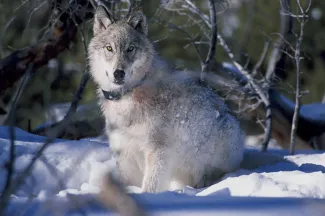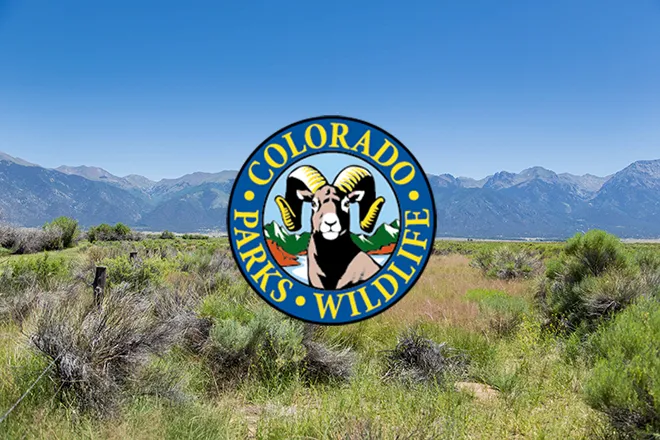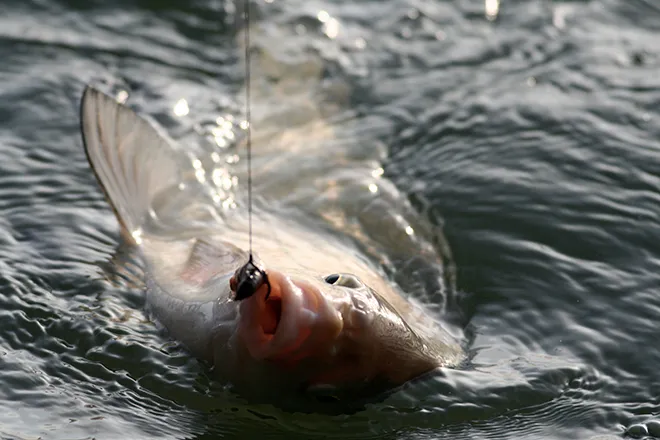
Commentary: Wolves Are Back in Colorado, Some Residents Are Happier About That Than Others
Editor’s Note: This article was originally published in Keep It Rural, an email newsletter from the Daily Yonder.
I have never seen a wolf, but I hope to.
Wolves run freely through my dreams, I see shadows of them in the long snout of my entirely domesticated dog. I even have a wolf tattoo to prove my undying love for canis lupus.
In my early twenties I almost got a job in wolf conservation, which would have put me on a totally different career path than the one I'm on now. But the human hiring team – not the wolves –- decided they didn’t want me.
There aren’t many gray wolves left in the United States. Before western colonization, wolves roamed throughout North America, crossing borders before they were borders. It was (and still is) their home, after all.

USFWS - public domain
Today, gray wolf populations can only be found in states like Alaska, California, Idaho, Montana, Oregon, Wisconsin, Wyoming, and now Colorado, where in December of 2023 10 wolves were relocated from Oregon to the state’s Western Slope region.
This move is historical: it marks the first time a state, not the U.S. Fish & Wildlife Service, has voted on the reintroduction of an endangered species. Just over 50% of voters said yes to welcoming wolves back to Colorado. Another 30 to 50 wolves will be released in the state over the next three to five years under the plan.
Predictably, this decision has been a controversial one. Conflict between humans and carnivores is a tale as old as farming: wolf predation on livestock is a rancher’s nightmare. While wolves don’t often hunt livestock, they have been known to kill sheep, goats, and calves, and ranches in more remote areas of wolf country are especially vulnerable.
Many states have programs to reduce the impact of this loss. In California, the Department of Wildlife runs a grant program that offers compensation to ranchers for direct livestock loss, indirect livestock loss caused by stress from nearby wolves, and deterrent methods like fladry, which are bright flags hung at various intervals along fence lines. While it’s not a foolproof method, wolves tend to avoid these flags for at least a few weeks, which is why ranchers will hang them during calving season, for example.
But critics of programs like the California one say they don’t adequately compensate for the long-term stress livestock endure living near wolves, which can lead to fewer pregnancies and weight loss. This can be devastating to a rancher whose livelihood depends on weight and number of calves.
Effects on livestock is a major concern of Coloradans who are against the wolf reintroduction. A rancher from Toponas, Colorado, wrote in an editorial for the Denver Post that livestock producers were not told by either the U.S. Fish and Wildlife Service or the Colorado Parks and Wildlife when the wolf reintroduction would occur until it had already happened in late December. This lack of communication erodes ranchers’ trust in government agencies and widens the urban-rural divide growing in Colorado, according to Skylar Fischer, the Toponas-based rancher.
Like in most parts of the country, wolves were purposefully eradicated from Colorado in the 18th, 19th, and 20th centuries because of the threat they posed to livestock. But according to Colorado Parks and Wildlife, wolves only turned to livestock after their staple diets of bison, elk, and deer were depleted by hunters. Humans killed wolves to stop them from killing their livestock, but in the process, wolves almost went extinct. Only because of federal protections through the Endangered Species Act and some state regulations have wolf populations slowly started to return.
Thanks to my attempt years ago to become a Professional Wolf Girl, I get notified every time there’s a suspicious wolf death in Oregon. Often, the carcass (or carcasses) was poisoned. Always, the local wolf conservation group releases a public plea searching for leads on who might’ve dunnit, but usually, no one ever answers.
Killing a wolf is illegal in Oregon – the maximum penalty for this Class C Felony is a $125,000 fine and five years in prison. Some exemptions are made if the wolf is attacking livestock.
But in Colorado, full exemptions have been made to give state wildlife officers and ranchers the ability to kill wolves if they threaten livestock or working animals. “Gaining that latitude under federal law has been a top priority for rural state lawmakers,” said a Colorado Public Radio News article.
Wolves are tricky subject matter – for me, they bring up questions of life and death and can and should. Who gets a say in how humans interact with wolves, and every other living thing? Just because we can invoke authority over wolves, does this mean we should?
Humans have a terrible track record when it comes to our treatment of other life forms. When one animal bites, we bite back, usually ten times as hard. More often, we attack first, mowing down every living thing in the name of progress.
Colorado is trying to bring back wolves. I hope they succeed without much bloodshed.
This article first appeared on The Daily Yonder and is republished here under a Creative Commons license.















